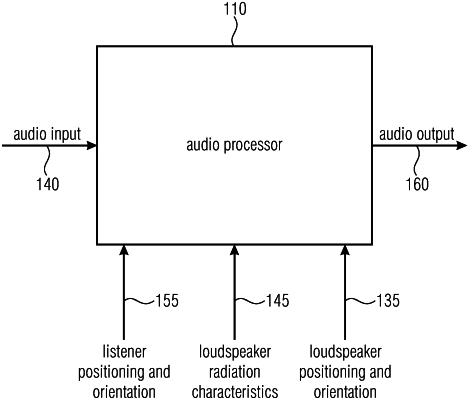| CPC H04R 5/04 (2013.01) [H04R 3/12 (2013.01); H04R 5/02 (2013.01); H04R 5/027 (2013.01); H04S 7/303 (2013.01); H04S 2400/01 (2013.01); H04S 2400/11 (2013.01); H04S 2420/01 (2013.01)] | 45 Claims |

|
1. An audio processor for providing a plurality of loudspeaker signals on the basis of a plurality of input signals,
wherein the audio processor is configured to acquire an information about a position of a listener;
wherein the audio processor is configured to acquire an information about positions of a plurality of loudspeakers;
wherein the audio signal processor is configured to select one or more loudspeakers for a rendering of the objects and/or of the channel objects and/or of the adapted signals derived from the input signals, in dependence on the information about the position of the listener, and in dependence on an information about positions of the loudspeakers;
wherein the audio signal processor is configured to render the objects and/or the channel objects and/or the adapted signals derived from the input signals, in dependence on the information about the position of the listener and in dependence on the information about positions of the loudspeakers, in order to acquire the loudspeaker signals such that a rendered sound follows a listener when the listener moves or turns.
|